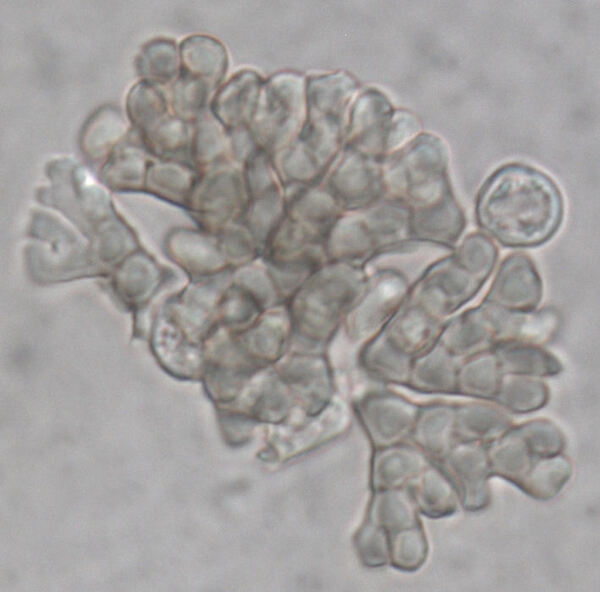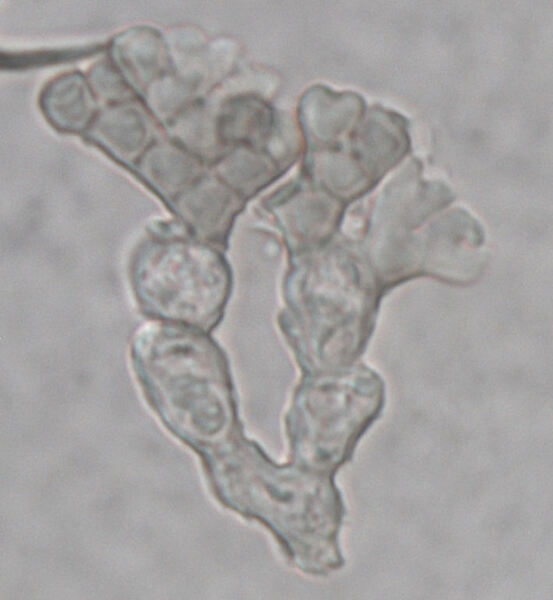Cheiromycina petri D. Hawksw. & Poelt
Lichenologist, 22: 219, 1990
Synonyms:
Distribution:
Description: Thallus crustose, thinly episubstratic, pale yellowish green to yellow-grey, the surface somewhat waxy, effuse, of dispersed to aggregated warts or more or less continuous to irregularly rimose, (25-)30-50(-60) um thick. Cortex composed of plectenchymatous to almost pseudoparenchymatous, hyaline, subglobose, 3-4 µm wide cells; hyphae developed below the photobiont layer and the sporodochia penetrating between the outer bark cells, flexuose to torulose, septate, hyaline, (l-5-)2-2-5(-3) µm thick. Conidiomata sporodochial, superficial, persistently pale bluish grey to grey, flattened to slightly convex, discrete to confluent, orbicular to elongate-ellipsoid, sometimes cerebriform, mainly 0.2-0.5(-0.7) x 0.l-0.3(-0.4) mm. Conidiophores hyaline to pale brown, septate, dichotomously branched, slightly swollen between septa, 8-15(-20) x 2-3-5 µm wide, smooth-walled. Basal conidiogenous cell terminal or lateral, colourless, elongate-ellipsoid to subglobose, (3-)4-6(-9) x 2-5-5(-6) µm. Conidia very variable in size, broadly fan-shaped, (12-)20-50(-65) x 18-25 µm, 3-6 times dichotomously branched, multi-septate (euseptate in lower part, distoseptate in upper part), the branches convergent, compacted, 2-5-3-5 µm thick, the apical cells palmate to finger-like, the final branches 3-8 µm long, remaining colourless in upper part, turning pale to fuscous brown in lower part, smooth-walled. Photobiont chlorococcoid, the cells 7-10 µm wide. Spot tests: thallus K-, C-, KC-, P-, UV-. Chemistry: without lichen substances.Note: a widespread holarctic species growing on the bark of different broad-leaved trees (e.g. Betula, Acer), mostly in natural situations, which, however, was poorly collected being always sterile, with a few records from the Eastern Alps (Austria). To be looked for in the Italian Alps.
Growth form: Crustose
Substrata: bark
Photobiont: green algae other than Trentepohlia
Reproductive strategy: mainly asexual, by conidia and thalloconidia

Predictive model
Growth form: Crustose
Substrata: bark
Photobiont: green algae other than Trentepohlia
Reproductive strategy: mainly asexual, by conidia and thalloconidia

Predictive model
 Index Fungorum
Index Fungorum
 GBIF
GBIF















